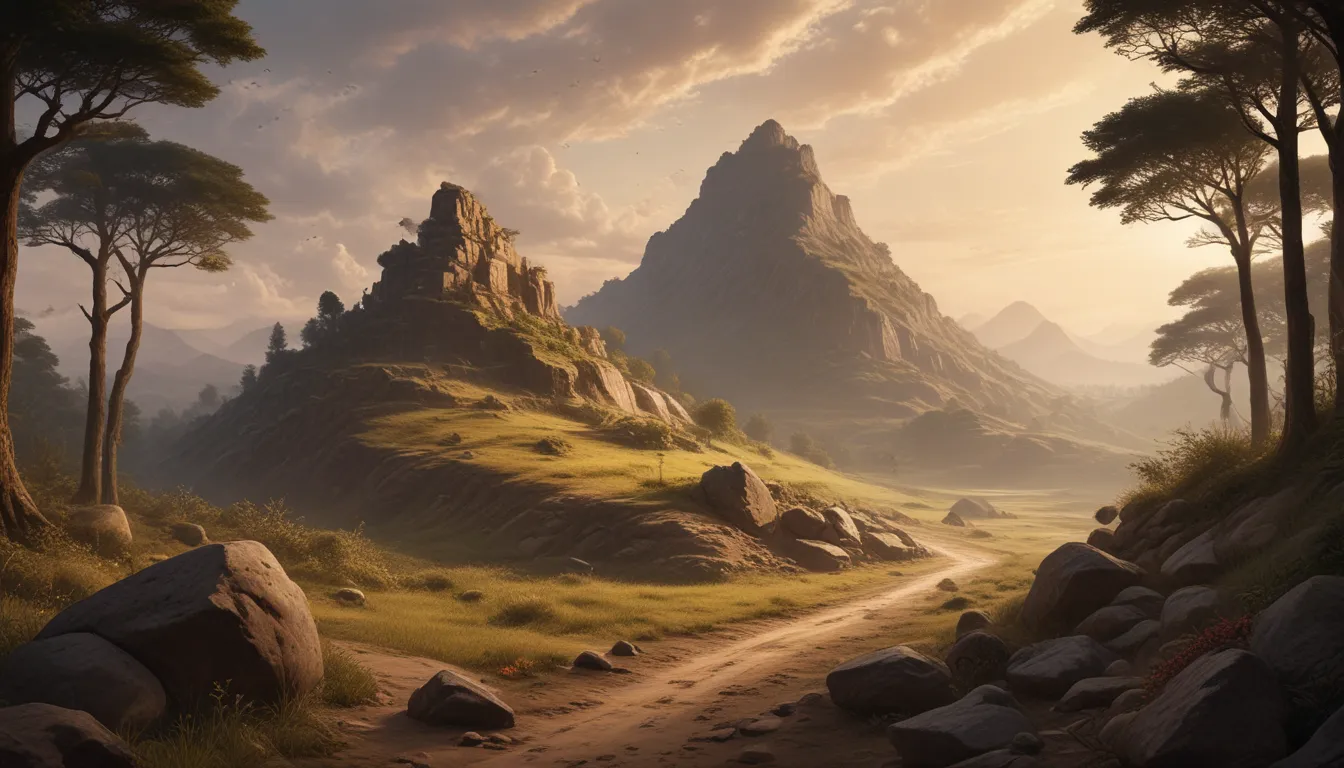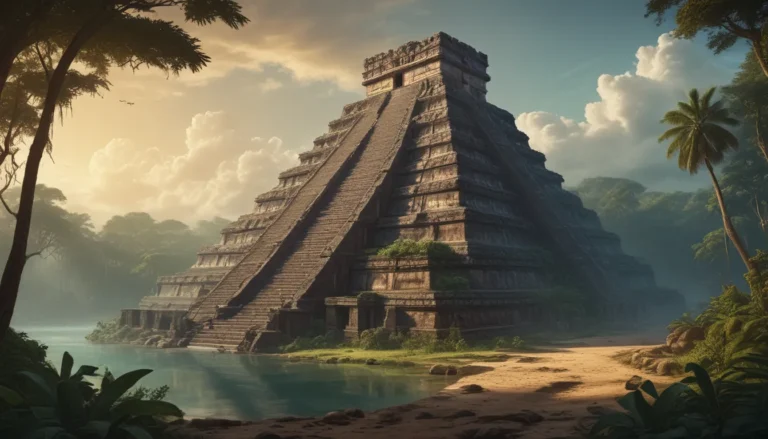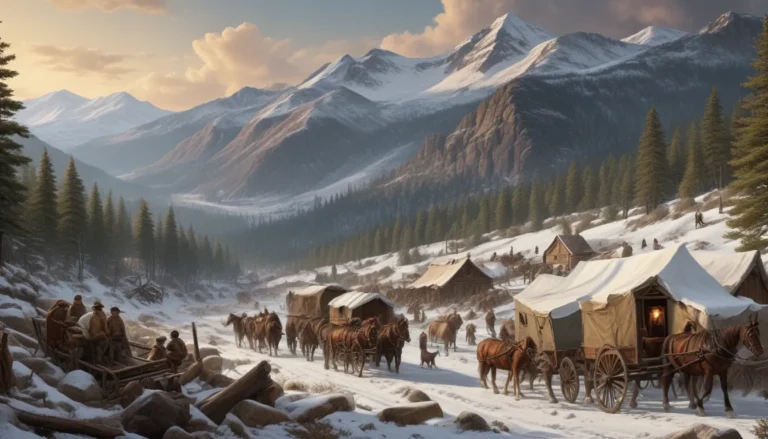The images in our articles may not match the content exactly. They are used to grab your attention, not to show the exact details in the text. The images complement the text but do not replace it.
Are you intrigued by the mysterious earthen mounds scattered across the landscapes of North America? Delve into the captivating realm of the Mound Builders, the master architects behind these ancient marvels. From serpent-shaped mounds to towering structures that rival today’s skyscrapers, the indigenous peoples crafted earth into forms that have puzzled and fascinated historians and archaeologists for centuries. So, who were the Mound Builders, and what secrets do their mounds hold? Let’s embark on a journey back in time to unravel the rich history and unearth fascinating facts about these incredible architects. Get ready to explore the legacy left behind by the Mound Builders, where history becomes a captivating adventure!
Unveiling the Rich Tapestry of Mound Builders
The Mound Builders were prehistoric indigenous peoples of North America who constructed various styles of earthen mounds for religious, ceremonial, burial, and residential purposes. These masterful architects created a diverse legacy that continues to amaze and inspire people today. Spanning over 5,000 years, from approximately 3400 BCE to the 16th century CE, the Mound Builders encompassed several distinct cultures, including the Adena, Hopewell, Mississippian, and others. Each culture was known for its unique mound-building practices and cultural attributes, showcasing advanced engineering knowledge and social organization.
Unraveling the Purpose Behind the Mounds
The mounds served a myriad of purposes, from graves to platforms for buildings and ceremonies. These ancient structures varied significantly across cultures and time periods. Some mounds functioned as burial sites, containing artifacts, human remains, and items meant to accompany the deceased in the afterlife. Others served as platforms for important structures such as temples, council houses, and leaders’ residences, symbolizing their central role in the community’s spiritual and social life.
The Art of Construction: A Testament to Ingenuity
Building these impressive mounds required sophisticated engineering knowledge and a well-organized labor force, demonstrating the advanced social organization of the Mound Builders. Workers meticulously carried baskets of earth from various sources, layering them to create the desired shape. The construction process could span years, or even generations, highlighting the immense effort and coordination involved. Monumental mounds like Monks Mound at Cahokia contain millions of cubic feet of earth, showcasing the incredible dedication and skill of the builders.
Exploring the Geographic Spread and Diversity
The Mound Builders’ cultures spanned a vast area of North America, from the Great Lakes down to the Gulf of Mexico and from the Atlantic coast to the Mississippi River. This expansive geographic spread resulted in a diverse range of mound styles and functions, reflecting the varied environments and cultural practices of the builders.
The Decline and Rediscovery of Mound Builders
The decline of mound-building cultures is attributed to various factors, including environmental changes, overhunting, and the arrival of European explorers and settlers. Despite their eventual disappearance, interest in the Mound Builders resurfaced in the 19th century, leading to archaeological investigations and preservation efforts. Early theories about the origins of the mounds were speculative and often biased, but modern archaeology has provided valuable insights into the societies and achievements of the Mound Builders.
Embracing the Legacy of the Mound Builders
The legacy of the Mound Builders remains etched in the landscape of North America, with their earthworks still standing as awe-inspiring monuments today. Sites like Cahokia, Serpent Mound, and Moundville are considered engineering marvels, attracting thousands of visitors annually. The study of Mound Builders continues to shed light on the complex societies that thrived in North America long before European contact, challenging stereotypes and expanding our understanding of pre-Columbian history. Artifacts found within the mounds offer invaluable insights into the daily lives, beliefs, and social structures of these ancient peoples, preserving their legacy for generations to come.
A Glimpse into the Legacy of Mound Builders
As we delve into the legacy of the Mound Builders, we uncover a rich tapestry of history and culture that has shaped the Americas for millennia. Their mounds stand as testaments to their intricate society, intricate trade networks, and spiritual beliefs, leaving an indelible mark on the continent. By exploring the contributions of the Mound Builders, we gain a deeper understanding of the complexity and diversity of indigenous cultures in North America, highlighting their lasting impact on human civilization in this region.
FAQs: Unraveling the Mysteries of Mound Builders
Q: What exactly were mound builders?
A: Mound builders were ancient inhabitants of North America who constructed various types of earthen mounds for religious, ceremonial, burial, and residential purposes. These people belonged to different cultures over thousands of years, shaping the landscape with their impressive creations.
Q: Did all mound builders belong to one specific culture?
A: Not at all! Mound builders came from various cultures and time periods. Each culture, such as the Adena, Hopewell, and Mississippian, contributed unique mound-building practices and cultural attributes.
Q: What was the purpose of these mounds?
A: Mounds served multiple purposes, from ceremonial centers to burial sites and platforms for buildings or homes. The diverse functions of the mounds showcased the rich cultural and spiritual practices of the builders.
Q: How big were these mounds?
A: The sizes of mounds varied widely, from modest structures to massive earthworks like Monks Mound at Cahokia, which stood at about 100 feet tall and covered 14 acres at its base, highlighting the scale and complexity of their construction.
Q: Can you visit these mounds today?
A: Absolutely! Many mound sites are preserved as historical parks or monuments, allowing visitors to explore and learn about the ancient civilizations that once thrived in these areas.
Q: How did ancient people build these mounds?
A: By hand! Workers carried soil in baskets from nearby sources and painstakingly piled it up over many years, showcasing the incredible dedication, teamwork, and organization of the builders.
Q: Are there any myths or legends about the mound builders?
A: Before their origins were understood, various myths and legends surrounded the mound builders, including wild theories about lost civilizations and wandering explorers. Archaeology has since provided clarity on the indigenous origins of these monumental earthworks.
Q: What’s the most surprising fact about mound builders?
A: Perhaps the most surprising aspect is the artistic vision and scale of some of the earthworks, such as the Great Serpent Mound in Ohio, a quarter-mile-long effigy mound shaped like a snake. These creations not only demonstrate the builders’ skills but also their unique connection to the environment.
Exploring the Authenticity of Our Content
Our dedication to delivering authentic, engaging content drives our mission to provide readers with valuable insights and knowledge. Every fact on our site is contributed by individuals like you, bringing diverse perspectives and information to light. To uphold the highest standards of accuracy and reliability, our editors meticulously review each submission to ensure that the facts shared are not only fascinating but also credible. Trust in our commitment to quality and authenticity as you embark on a journey of discovery and learning with us.
By immersing ourselves in the world of the Mound Builders, we uncover a rich tapestry of history and culture that continues to inspire and captivate us. Their legacy transcends time, reminding us of the ingenuity, resilience, and artistry of indigenous peoples who shaped the landscapes of North America. The next time you encounter a mysterious earthen mound, remember the remarkable legacy of the Mound Builders and the enduring impact of their ancient civilizations on our world.






